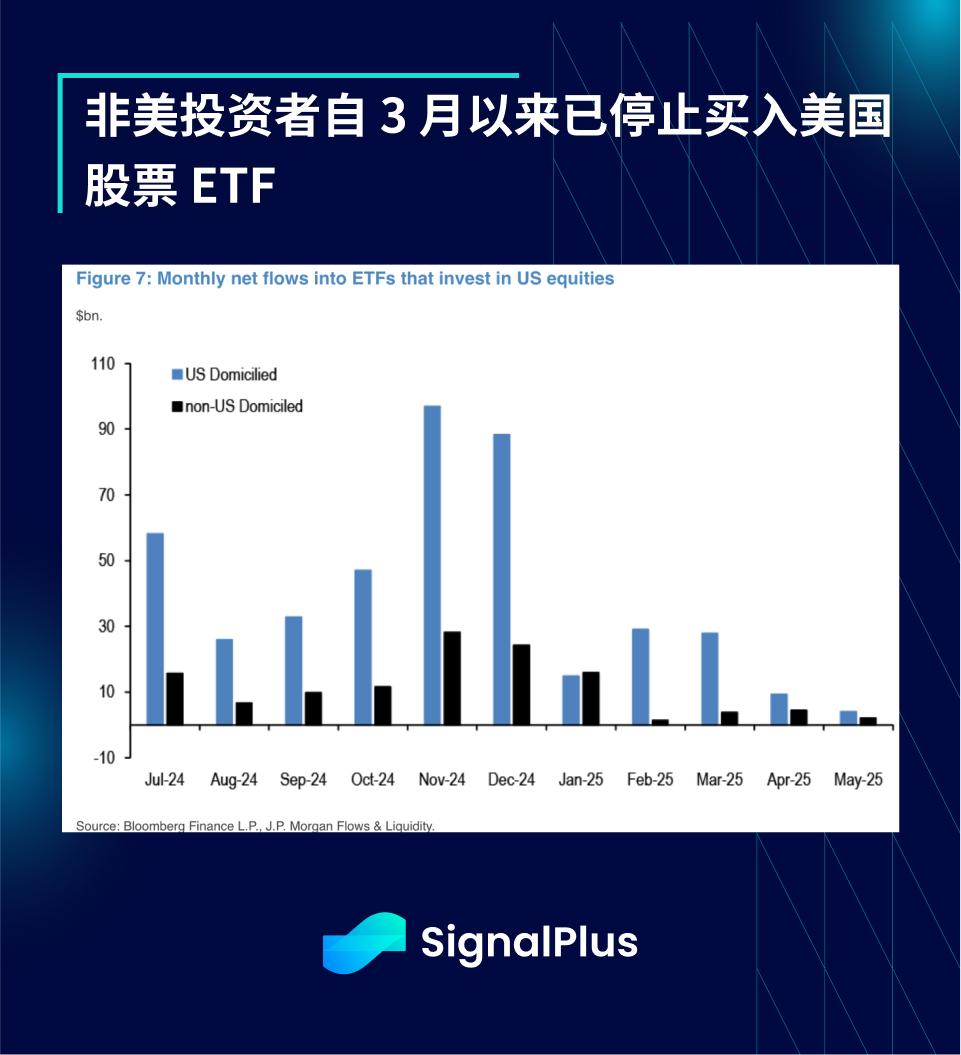



Source: IgniteRatings, X
Moody's downgraded the U.S. government's long-term issuer and senior unsecured debt rating from Aaa to Aa1, and adjusted the outlook from negative to stable.
This one-level downgrade reflects the continuous rise in U.S. government debt and interest payment proportions over the past decade, far exceeding those of other sovereign countries with the same rating.
---Moody's, May 16, 2025
Moody's downgrade of the U.S. long-term credit rating means that the U.S. sovereign debt credit has been removed from the AAA category by all major rating agencies. This news was released hours after the U.S. stock market closed last Friday, and it is rumored to have prompted the U.S. House Budget Committee to quickly advance the "One, Big, Beautiful Bill" on Sunday night to minimize potential market impacts.
Setting aside political maneuvering and budget bill drama, is credit rating still important? Readers may recall that Silicon Valley Bank (SVB) still held an "A-grade" rating before its collapse, and more experienced readers might not have forgotten the absurdly high ratings given to CDOs, CMOs, subprime mortgages, and Chinese real estate bonds.
Regarding this issue, we will organize key points in an FAQ format below:
When has the U.S. been downgraded in the past?
July 2011: S&P
August 2023: Fitch
Will there be immediate technical impacts?
For institutions restricted by ratings and unable to hold non-AAA bonds
Due to the size and irreplaceability of U.S. debt as an asset class, these institutions typically adjust their internal rules (as they have done in the past).
Impact on centralized clearing
DTCC and CME set discounts (haircuts) for Treasury bonds as collateral based on duration and bond type, with less reliance on ratings.
Impact on money market funds
Short-duration allocations weaken the impact of credit ratings. In fact, even through past downgrades and debt ceiling disputes, demand for Treasury bonds has hardly fluctuated.
Impact on the long-term reserve asset status of U.S. debt
In reality, Trump's tariff policies and global trade restructuring have a more profound impact on global U.S. debt demand than any rating agency.
How did the market react in the past?
In 2011, as it was the first downgrade and during the initial "debt ceiling crisis," the market was more shocked.
Stocks fell about 20% in July-August, but due to risk hedging and ongoing quantitative easing, the 10-year U.S. Treasury yield actually dropped 120 basis points (meaning prices rose) after the downgrade.

In 2023, the downgrade occurred in August, right after the early summer debt ceiling crisis, while the U.S. Treasury was rebuilding its general account to recoup market liquidity and issuing large amounts of Treasury bonds. At that time, the SPX index fell about 10%, and U.S. Treasury yields continued to rise about 50 basis points for the year. Although this credit rating adjustment might have accelerated the relative market trend, overall, it did not fundamentally change the market landscape.

Will this downgrade affect fiscal decisions?
The House Budget Committee did indeed advance the budget bill on Sunday night, showing some intention to mitigate potential market impacts.
Will it reduce U.S. dollar spending and control the deficit? While the downgrade might give more weight to fiscal hawk voices, it is unlikely to change the long-term trend of uncontrolled spending and concerns about unsustainable U.S. debt supply.
This will increase uncertainty about the final passage time of the bill/potential delays, and may weaken the potential positive effects of tax cuts due to its adverse impact on the budget.
Possible market reactions this time?
In terms of stocks, given past experience and the recent rapid market rise without broad leadership, stocks are likely to see an instinctive short-term decline.
Bond market trends are harder to predict, depending on the extent of decreased risk appetite, the game between fiscal hawks and Trump, whether the Senate can pass the budget before the debt ceiling expires, and whether this event will affect Trump's 90-day tariff truce agreement.
Overall, U.S. stocks, U.S. bonds, and the U.S. dollar may face negative risks.

What are macro market positions currently?
Macro funds, systematic funds, and quantitative funds have mostly covered short positions/reduced positions, and have even turned long.

Last week, the market saw a small "margin surge" with traders rushing to cover short positions, and the NYSE Advance-Decline Line indicator reached a recent new high.

How did economic data perform last week?
It was quite bad for the bond market.
Despite recent tariff policy relief, the University of Michigan Consumer Expectations Index dropped significantly.
The overall index fell to its lowest point since June 2022, almost approaching the lowest level since the 1980s.
Long-term inflation expectations rose to the highest level since 1991 (4.6%).
1-year inflation expectations were as high as 7.3%, the highest since 1981.

Should the market worry about foreign asset sales?
Let's review the situation over the past few months.
Non-U.S. investors have stopped adding to U.S. stock funds since March and have become net sellers of bond funds, a trend that may continue in the short term.

However, in terms of actual impact, bank data shows that foreign-held U.S. dollar assets totaled about $57 trillion in 2024, a significant increase from $2.2 trillion in 1990. Of this, about $17 trillion is in stocks and $15 trillion in bonds.
In other words, foreign investors hold about 20% of total U.S. stock supply and 30% of total U.S. bond supply.
This is not a small amount and cannot be easily sold or reduced without affecting the entire capital market structure.
Moreover, assets are distributed among different foreign holders, and any rash action by one party would involve the strategic responses of other participants.
For the stock market, the key still lies in corporate profitability, which has been good so far. According to JPM data, SPX index earnings in the first quarter exceeded expectations by about 8%. 70% of companies have reported earnings, with 54% beating revenue expectations, 70% exceeding profit expectations, and Mag-7's EPS growth reaching 28%, far ahead of the index.

In terms of asset ownership structure (excluding offshore structures like the Cayman Islands for now), the United Kingdom, Canada, and Japan are currently the top three global holders of US assets, and they are also close allies of the United States. China ranks fourth, accounting for about 4%, which is significantly lower than the 8-9% of the previous group.

Based on the trends over the past month, Japanese investors have indeed reduced their US debt holdings, but simultaneously significantly increased their US stock holdings, suggesting this is more of an asset allocation adjustment rather than a true de-dollarization.
In short, a large-scale capital withdrawal or de-dollarization is unlikely to occur in the short term.

How are Cryptocurrencies Performing?
Interestingly, despite gold prices dropping about 7% from their peak, cryptocurrency prices have remained stable throughout the trend.
Unlike the synchronized rise of gold prices and BTC in previous months, recently BTC has continued to rise while gold prices weaken, which is also reflected in ETF capital flows.
Gold ETFs are experiencing outflows, while BTC ETF flows have slightly increased, with similar trends in CME gold and BTC futures positions.


Overall, as the macro market stabilizes and the US dollar depreciation is reflected across most asset classes, we expect the decoupling of correlations and relative value opportunities between these micro-assets to continue until the next major geopolitical development truly materializes.
Wishing everyone successful trading!

You can freely use the SignalPlus trading trend indicator feature at t.signalplus.com/news, which uses AI to integrate market information, making market sentiment clear at a glance. If you want to receive our updates in real-time, welcome to follow our Twitter account @SignalPlusCN, or join our WeChat group (add assistant WeChat, please remove the space between English and numbers: SignalPlus 123), Telegram group, and Discord community to interact with more friends.
SignalPlus Official Website:https://www.signalplus.com







